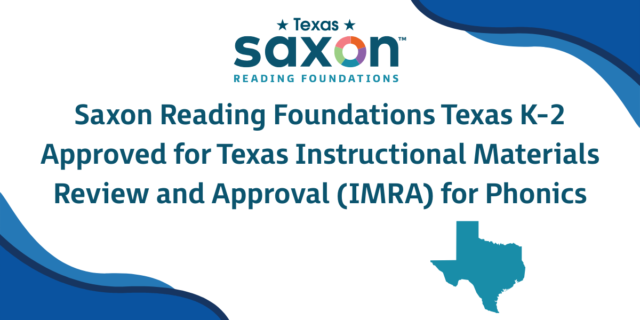
“I like it the way it is.” As a writing teacher, I groan inside when I hear my students say this. It’s the verbal equivalent of that giant, capitalized declaration etched into many of my students’ writing pieces: THE END. Whether uttered or written, whether delivered with a scowl and arms crossed or offered hesitantly, the message is the same: This piece is not changing. This work site is closed, and no renovations will be made. No “revision”—no “reseeing” of this writing—is happening, period.
What’s interesting is that I’ve seen this reluctance to revise in students across the spectrum of writers. Not surprisingly, it shows itself with my struggling writers, the ones who can never quite capture the richness of their thoughts on the page, or who have had a rough history with writing and want it all to be over. But it also crops up at times with some of my most prolific and confident writers. And why wouldn’t it? Revision is, after all, extra work. It takes time and effort, faith and risk. It’s a messy, nonlinear process with no guarantees or clear solutions.
Yet, there are these golden pockets of time in my writing classroom when there’s a palpable buzz of exploration and experimentation, and virtually everyone is swept up in the atmosphere. It might be a month or two into the year, or midway through a unit, when I notice a kind of culture of revision taking shape. There’s a hum of energy in our writing workshop, with students seeking one another out to share new pieces and trying new approaches.
Sarah, who has been stuck on a memoir about the death of her dog, finds inspiration from a minilesson on dialogue, and she transforms her piece with several powerful, heartbreaking lines. Peter, one of my most reluctant writers, has read a poem for two voices from Paul Fleischman and decides to try one of his own. It’s a piece about the time his brother broke his arm, with the voices and perspectives of both boys included, and Peter is beaming as he reads it to his classmates. Kathy, one of my strongest writers, but one who often bristles at suggestions for changing her pieces, listens intently to feedback during a conference with her peers and leaves in an excited flurry, scribbling down fresh ideas for a new ending to her book review.
This is the environment I strive to create in my language arts classes, and sometimes we strike it. It’s as if I look up from all our hard work and suddenly a community of writers has emerged. My students aren’t just writing and revising with gusto but have taken on new identities as writers. Sure, there’s still a stubborn resistance to change in some of my writers, but when we’ve created a culture of revision, I notice in many of my students:
- A desire to extend their writing beyond their initial drafts and efforts. Students recognize different choices they can make to improve and are motivated to try some of these new approaches. They make substantial (as opposed to superficial) changes “after the end.”
- A spirit of experimentation, innovation, and positive risk-taking. Students feel safe and excited to try different approaches with their writing and other work.
- An understanding that mistakes are part of the process and can be a crucial component in learning and growing. Students understand that missteps (such as lackluster first drafts) happen to all writers and can be a springboard to something better.
- A sense of agency and ownership with writing and other school work. Students have choice and variety of options—a rich “writing toolbox”—to draw from as they take the reins for revising their pieces.
- A feeling of collaboration and community. Students and teachers offer positive comments, questions, and suggestions to help one another keep growing as writers.
But even when we come close to this ideal, I wonder: How did we get here? There are so many moving parts to the way I approach writing—so which of my teaching moves sparked this culture of revision? Which practices have the most positive impact on my students’ views toward writing and revising? Of all I do as an educator—the activities and lessons I teach, the types of feedback I offer, the language I use, the classroom structures I employ—which are the richest seeds for this environment I want to create? And since—let’s face it—we don’t come close to achieving this culture quite a bit of the time, what am I doing that’s counterproductive? Are there ways I’m sending the wrong message or unintentionally undercutting the culture of revision I’m trying to achieve?
These are some of the questions I’ll be exploring through my research in the coming months as a Heinemann Fellow. Which practices are showing promise so far? This year I’ve asked my students to do more reflecting on their own processes through “thoughtshots” and screencasts, and I’ve modeled more of my own revisions as a writer. Building on the work of educators such as Peter Johnston, I’ve tried to be more aware of the language I use (e.g., “What revision strategy will you try next as a writer?”) that might invite the identities I want my students to grow into. In upcoming blogs, I’ll reflect on these and other practices in my own middle school classroom to find ways to build this culture of revision intentionally and consistently—and I hope you’ll join me with ideas of your own for creating this kind of learning community.
Ultimately, I hope to make my students more open to changing their writing—and to changing the story they tell of themselves as writers. I hope to weave my students into a larger narrative: the narrative that they are writers, and that writers take their work “the way it is” and search for new possibilities after “The End.”

Chris Hall engages his middle school students by incorporating meaningful projects to “focus their learning across subject areas.” Their inquiry often incorporates town landmarks or local historical areas as expedition projects for his students, which he says brings students closer to their community. He is a 5th and 7th Grade Teacher at Oyster River Middle School.


